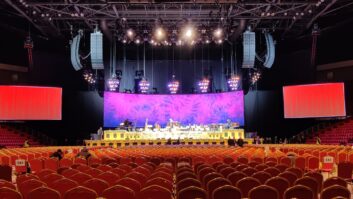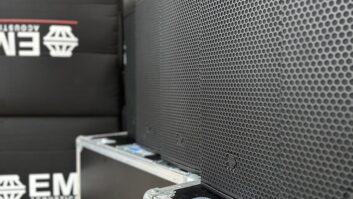 Commercial AV integrators have the amazing ability to design and integrate tech solutions that allow for the easiest, most efficient and best possible experience for their clients. When it comes to audio specifically, good microphones, high-quality speakers and intelligent technology can go a long way in providing excellent quality sound in a room. However, the absolute most important factor in an audio system designed to allow for communication, collaboration and consumption is intelligibility.
Commercial AV integrators have the amazing ability to design and integrate tech solutions that allow for the easiest, most efficient and best possible experience for their clients. When it comes to audio specifically, good microphones, high-quality speakers and intelligent technology can go a long way in providing excellent quality sound in a room. However, the absolute most important factor in an audio system designed to allow for communication, collaboration and consumption is intelligibility.
The most beautiful sounding loudspeakers are worth nothing if installed in a room that reverberates like a parking garage. It’s critical that integrators consider the physical makeup of a space – including building materials like glass or marble – that will have a massive impact on the acoustics of that space. These materials will affect the quality of intelligibility and integrators who don’t take this into account are doing a disservice to their clients and run the risk of harming their reputation. They can design and install a fabulous, state-of-the-art system that performs perfectly, but if the client is disappointed because the finely appointed room is made of glass, tile and wood furnishings and they have a hard time understanding meeting participants on the other end of a video-conference call, then the installation is a failure. The client will want to know why the integrator didn’t mention or take into account the poor acoustics at the start of the project. As an integrator, it is your responsibility to remember that the key is intelligibility.
It’s also important to note that acoustic solutions are not cookie-cutter and will always have to be specific to a particular space. The acoustics in a board room or conference room should be different than those of a gymnasium. A call centre will require different considerations than a warehouse. And the solutions required for one lecture hall may differ from those required for a neighbouring lecture hall. Each space needs to be looked at and measured independently to create the optimal environment for intelligibility in that space.
As such, the best thing an integrator can do is utilise the skillsets of an acoustic specialist, an acoustician or an acoustic engineer. There are many tools and measurable characteristics that can be utilised by an acoustic specialist that can inform whether acoustic treatment is necessary and what solutions should be incorporated. Ideally, the integrator would work hand-in-hand with the specialist to build out the AV design with the required acoustic solutions.
As mentioned earlier, intelligibility is key. And while there’s an actual metric for measuring intelligibility (STI or Speech Transmission Index), an integrator can quickly determine whether a project warrants consultation from an acoustic specialist if, at the outset, the integrator considers what I call the Six Cardinal C’s of Commercial Acoustics:
1. Clear Communication
2. Constructive Collaboration
3. Comfortable Consumption
If the integrator believes any of these might be hindered, then it’s likely that, at the very least, an acoustic consultation is necessary. Don’t let acoustic issues hinder your next AV installation.
Danny Shatzkes is the owner of commercial AV installer Harmony Studios and Integrated Acoustics, an acoustics consulting, engineering, design and installation firm that partners with AV integrators on their projects to improve the acoustic offerings to their clients.







